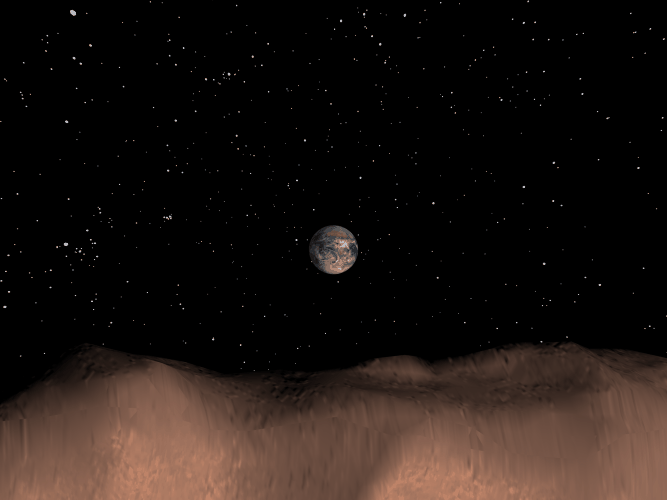

2009 FH fly past, only 85,000 km away from Earth (NASA)
[/caption]Another asteroid is set to make a close approach of 79,000 km according to NASA, a distance twice that of geosynchronous orbit around the Earth. Although the 15-20 metre-wide rock is not expected to cause any problems to Earth or satellites, some observers may be lucky to spot the faint light from 2009 FH as it passes.
Interestingly, this new object comes only two weeks after a larger (50 metre wide) asteroid was spotted passing the Earth at a similar distance. So it begs the question, why are we seeing so many asteroids lately?
“This asteroid flyby will be a good viewing opportunity for both professional and amateur astronomers,” said Don Yeomans from the Near-Earth Object Office at NASA’s Jet Propulsion Laboratory in Pasadena, California. “The asteroid poses no risk of impact to Earth now or for the foreseeable future.”
NASA is always very quick to point out these objects are harmless, passing the Earth at a very safe distance, often beyond the Moon’s orbit. However, 2009 FH will pass at a similar distance to the 50 metre-wide 2009 DD45 on March 2nd.
This discovery was made by NASA’s Near Earth Object Observation Program, known as Spaceguard, to detect and track potentially hazardous asteroids that stray close to the Earth. It appears the Spaceguard team are getting better and better at spotting these chunks of rock. Although it might seem there are a lot more asteroids than before, this isn’t the case, we’re just getting better at finding them.
Sources: NASA, Spaceweather.com
Some exoplanets have characteristics totally alien to our Solar System. Hot Jupiters are one such…
Stars form in Giant Molecular Clouds (GMCs), vast clouds of mostly hydrogen that can span…
Let’s dive into one of those cosmic curiosities that's bound to blow your mind: how…
The majority of the universe remains unmapped, but we have a potential window into it…
NASA engineers are pressing ahead with preparations for the Artemis II mission unless someone tells…
It’s not uncommon for space missions to be tested here on planet Earth. With the…